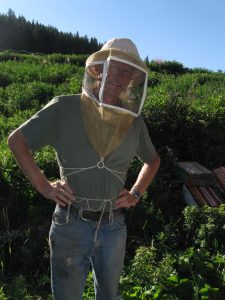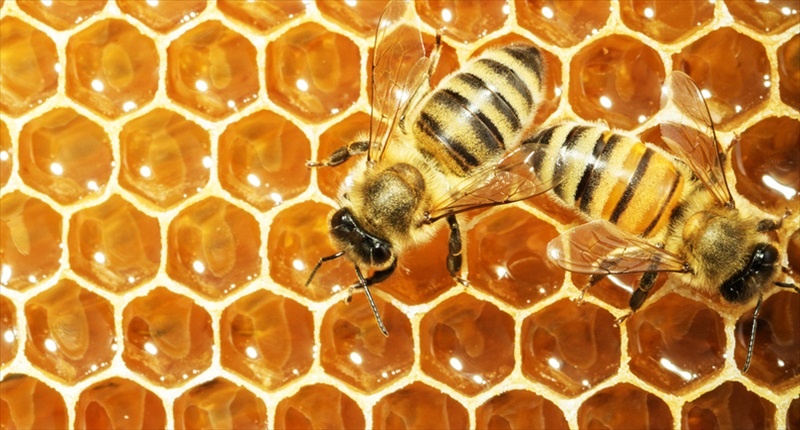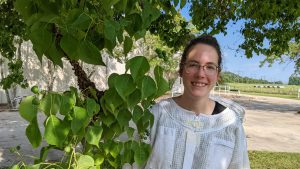
Get On Board!
coloradobees1@gmail.com
A Taste of Medicine
by- Ed Colby
Just when I started getting the Nosema under control in a handful of my weaker bee colonies, my gal Marilyn drank the medicine!
How could this happen? I mixed the Fumagilin into a sugar syrup solution in a gallon plastic jug, with “FUM” written on it in big letters with a felt pen. That seemed adequate to me.
But I should tell you that our well water isn’t so good, so we drink water that Marilyn brings from her house in town, in jugs just like the Fumagilin jug.
Marilyn keeps a little water Thermos in the refrigerator, and she topped it off with one of the plastic jugs, the wrong one, of course.
She broached the subject thusly: “The water in my Thermos tastes a little sweet. You wouldn’t have any of those bee chemical jugs in the kitchen, would you?”
Me: “For cryin’ out loud, girl, you drank the Fumagilin!”
Marilyn: “Well, I feel just fine.”
Me: “I’ll take you to the emergency room!”
Marilyn wasn’t having any of my panic. “Don’t be silly. I just drank a little bit,” she said.
So I did nothing but monitor the patient, and the patient survived, with no apparent ill effects.
I got the idea for using Fumagilin-B at the summer meeting of the Colorado Professional Beekeepers Association, not to be confused with the Colorado State Beekeepers Association. I belong to both.
A respected beekeeper reported that when you see spotty brood, or your colonies just won’t build up, or you see a rash of queen die-offs and supersedures, the unicellular fungal parasite Nosema Ceranae might be the culprit. He said you can knock out this disease with the antibiotic Fumagilin-B, and he gave us his recipe. I’ve got some hives that fit this description, and in a majority, the mid-Summer application of this strong dose of Fumagilin turned them right around.
Obviously you don’t want any honey supers on your hives when you use this stuff. It’s August as I write, but believe me, the dink hives I treated are in no danger of making surplus honey! I just want to keep the little darlings alive.
The recipe calls for a 9.5 gram jar of Fumagilin-B powder mixed into seven gallons of light sugar or high fructose corn syrup, two treatments, eight days apart, and don’t blow it and go longer than ten days! You dribble six ounces onto the top bars. I didn’t need seven gallons. I mixed a two-gram jar into 1.5 gallons of one-to-one sugar-water syrup.
So spotty brood doesn’t necessarily mean you have a bad queen! If your culprit is nosema, you could spend a lot of money replacing perfectly good queens with yet more perfectly good queens, and still not see your colonies bounce back.
It was good to rub elbows with real commercial beekeepers at the meeting. You can learn so much from these guys! There were only 30 people in attendance, but they represented 20,000 Colorado bee colonies!
There’s a bit of angst among at least some of the commercial beekeepers, newly organized into their own association, and beekeepers of the backyard variety, who now vastly outnumber commercial beekeepers in the venerable Colorado State Beekeepers Association.
Part of the unease stems from attitudes and beliefs about neonicitinoid pesticides. Many environmentalists and small-scale beekeepers have called for a ban on these now-common agricultural chemicals, on the grounds that they harm pollinators. The commercial beekeepers at the meeting I attended voiced the opinion that, rather than killing honey bees, the neonics have saved them. To some extent, they argue, the neonics have grounded the crop dusters, bane of beekeepers since the first pilot got the idea to spray poison out of airplanes.
We had major problems here in Colorado with the crop dusters. Furadan on alfalfa was devastating. Entire bee yards got wiped out. I used to move my bees out of Peach Valley every May when they sprayed Furadan for alfalfa weevil.
We need to follow the science, wherever that takes us. There’s more in this mix than our honey bees. There exist pollinators other than honey bees, many less resistant to the neonics, and presumably to other pesticides as well. We know this. And let’s not forget that God made us stewards of this good Earth. We need to work to reduce the harmful impacts of all pesticides on the environment. But the commercial guys have a point. If we ban neonicitinoids, and the crop dusters come back to rain deadly organophosphates from the sky, what chance might monarch butterflies and native bees, or our honey bees, have against them?
Politically and morally, we beekeepers have more that unites than divides us. But there’s going to have to be some give and take. We’re not going to be able to ban every chemical harmful to our pollinators and still feed the world. Food production’s a priority, too, you know. What we can do is work to mitigate harmful impacts. This can be as simple as spraying fungicides at night. Or keeping orchard floors mowed or cultivated, so as not to attract pollinators. Or tweaking a pesticide chemically so that it kills its target organism, but not pollinators. And yes, we may have to call for a ban on insecticides that clearly do more harm than good. But if we do, let’s do it with our eyes wide open.
Ed Colby practices beekeeping in Aspen Mountain, Colorado, where he lives with his partner, Marilyn.






